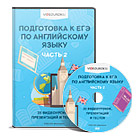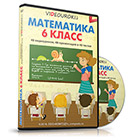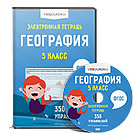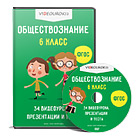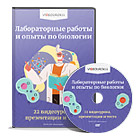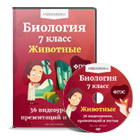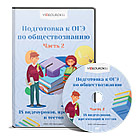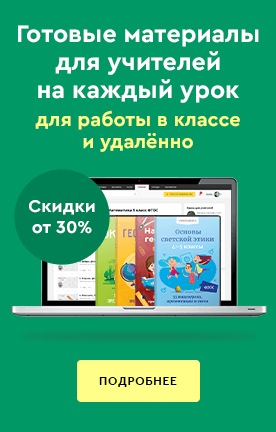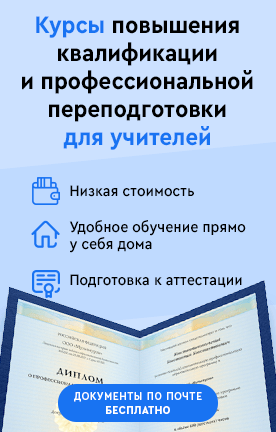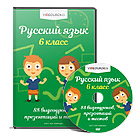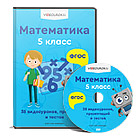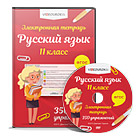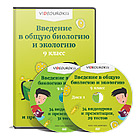| Long-term plan unit: 5 READING FOR PLEASURE | School: |
| Lesson 1 |
|
| Date: 9.01.2020 | Teacher’s name: |
| CLASS: | Number present: | absent: |
| Theme of the lesson: Introduction. Charles Dickens’ biography |
| Learning objective (s) that this lesson is contributing to | 7.1.2.1- use speaking and listening skills to provide sensitive feedback to peers; 7.1.3.1- respect differing points of view; 7.4.2.1- understand specific information and detail in texts on a range of familiar general and curricular topics; |
| Lesson objectives | All learners will be able to: |
| Most learners will be able to: • read a biography of Charles Dickens. • learn vocabulary for describing important periods during lifetime • practise guessing the meaning of vocabulary from context. |
| Some learners will be able to: |
| Success criteria | Give feedback to others orally Demonstrate respect to people’s opinions using lexical units of topic vocabulary Identify details in a text with little support |
| Value links | Labour and creativity, cooperation |
| Cross curricular links | Kazakh, Russian |
| Plan |
| Stages of the lesson | Planned activities (replace the notes below with your planned activities) | Teacher’s notes |
| Greeting
| Greet students; students respond to greeting and take their places. Hello, boys and girls! How are you? |
|
| Unit presentation | Background
A theatrical adaptation of Charles Dickens’ Great Expectationswas put on at the Vaudeville Theatre in London in 2013. Thephotograph is a still from it, and shows the English actressPaula Wilcox as Miss Havisham. Wearing her wedding dress and standing alongside her sunken wedding cake, Miss Havisham,one of the most well-known characters in English literature, is theimage of lost hope.
|
| Warm up | • Books closed. Write character on the board. Ask: What is a character? Elicit the answer: a person represented in a novel, filmor play. Elicit examples of well-known characters from Kazakh literature, e.g. figures from folklore such as Aldar Kose andZhalmauyzKempir, and twentieth-century characters such asBerdibekSokpakbaev’sKozha. • Ask students to open their books at page 56. • Refer students to the photograph and the three questions. • Put students into pairs and give them a couple of minutes toanswer the questions. • Elicit ideas about the character shown in the photograph. Thenexplain that the character is called Miss Havisham and that sheappears in a novel called Great Expectations. | Suggested answers
The dress suggests that the woman is not living in the modernperiod. The dress she is wearing and the room she is in createthe impression of wealth, but also of a life that is not going sowell. Perhaps the woman is unhappy.The expression on her facesuggests that she is very sad.
|
| Additional Information |
| Differentiation - how do you plan to give more support? | Assessment - how are you planning to check learners` learning? | Health and safety check ICT links |
| More support will be given to weaker learners by giving them a modified worksheets in some tasks with greater support | -through questioning and the redirecting of questioning in feedback activities -through observation in group and end performance activities -through formative task
| -Health promoting techniques -Breaks and physical activities used. -Points from Safety rules used at this lesson. |
| REFLECTION
| Answer the most relevant questions to reflect on your lesson. Were the lesson objectives/learning objectives realistic? What did the learners learn? What did/didn’t you like? What was difficult? |
| Long-term plan unit: 5 READING FOR PLEASURE | School: |
| Lesson 2 |
|
| Date: | Teacher’s name: |
| CLASS: | Number present: | absent: |
| Theme of the lesson: Great expectations. Part I |
| Learning objective (s) that this lesson is contributing to | 7.4.4.1- read a limited range of extended fiction and non-fiction texts on familiar and some unfamiliar general and curricular topics; 7.4.8.1- use familiar and some unfamiliar paper and digital reference resources with little support to check meaning and extend understanding; 7.6.2.1- use a growing variety of quantifiers for countable and uncountable nouns including too much, too many, none any, enough; |
| Lesson objectives | All learners will be able to: |
| Most learners will be able to: • talk about the past of a character from Great Expectations. • read an extract from the Great Expectations. |
| Some learners will be able to: |
| Success criteria | Figure out the content of a short text with some support Clarify the meaning of the word in a dictionary or other digital references Apply the correct quantifiers including too much, too many, none any, enough for countable and uncountable nouns in the context |
| Value links | Labour and creativity, cooperation |
| Cross curricular links | Kazakh, Russian |
| Plan |
| Stages of the lesson | Planned activities (replace the notes below with your planned activities) | Teacher’s notes |
| Greeting
| Greet students; students respond to greeting and take their places. Hello, boys and girls! How are you? |
|
| Warm up | Warm-up • Books closed. Write Charles Dickens on the board. Elicit anythingstudents know about the man. • If students do not recognise the name, say that Dickens was the most popular English-language writer of the mid-nineteenth century, and that many of his characters remain well-known, e.g. Oliver Twist, The Artful Dodger, Ebenezer Scrooge, WilkinsMicawber. |
|
| Practice | 1 • Ask students to open their books at page 57. Focus their attention on the photograph of Charles Dickens. • Ask students to read the biography and complete the factfile. Students can compare answers in pairs before youcheck them with the class. | Answers 1 1812 2 London 3 journalist 4 1836 5 Catherine Hogarth 6 1836 7 novels 8 1870 |
|
| A novel 1 • Write Great Expectations on the board. Point out that this novel, published in 1861, is one of Dickens’ most famousworks. • Elicit or teach that to have an expectation of someone,means to believe that they will achieve something. • Read out the questions and make sure students understandthat the character Pip is the one telling the story. • Students read the text and answer the questions. • Check answers. | Answers 1 three (the young lady, the boy and the strange lady) 2 in a dark house; it isn’t an attractive place – Pip refers to being ‘uncomfortable’ and ‘afraid’. He says ‘no daylight was allowed to get in’. |
|
| 2 • Read out the four items. • Put students into pairs to discuss what they think will comenext in the story. 3 • Students read the first two paragraphs in the next part ofthe story to check their answer to Exercise 2. • Ask students the impression we get of the woman fromthe way Pip describes her. At first we get the sense ofsomething clean and pure – everything is white, jewels ‘layshining on the table’. But then the mood changes. Thewoman is only wearing one shoe, the wedding dress she iswearing is not white, but ‘faded and yellow’. | Answers a description of a person a conversation between two people |
| Additional Information |
| Differentiation - how do you plan to give more support? | Assessment - how are you planning to check learners` learning? | Health and safety check ICT links |
| More support will be given to weaker learners by giving them a modified worksheets in some tasks with greater support | -through questioning and the redirecting of questioning in feedback activities -through observation in group and end performance activities -through formative task
| -Health promoting techniques -Breaks and physical activities used. -Points from Safety rules used at this lesson. |
| REFLECTION
| Answer the most relevant questions to reflect on your lesson. Were the lesson objectives/learning objectives realistic? What did the learners learn? What did/didn’t you like? What was difficult? |
| Long-term plan unit: 5 READING FOR PLEASURE | School: |
| Lesson 3 |
|
| Date: | Teacher’s name: |
| CLASS: | Number present: | absent: |
| Theme of the lesson: Great expectations. Part II |
| Learning objective (s) that this lesson is contributing to | 7.4.4.1- read a limited range of extended fiction and non-fiction texts on familiar and some unfamiliar general and curricular topics; 7.4.8.1- use familiar and some unfamiliar paper and digital reference resources with little support to check meaning and extend understanding; 7.6.1.15- use infinitive forms after a limited number of verbs and adjectives; use gerund forms after a limited variety of verbs and prepositions on a growing range of familiar general and curricular topics |
| Lesson objectives | All learners will be able to: |
| Most learners will be able to: • practice using the past simple to talk about what happened in the novel • read an extract from the Great Expectations. • answer the questions. |
| Some learners will be able to: |
| Success criteria | Figure out the content of a short text with some support Clarify the meaning of the word in a dictionary or other digital references Apply some abstract nouns and complex noun phrases in the context |
| Value links | Labour and creativity, cooperation |
| Cross curricular links | Kazakh, Russian |
| Plan |
| Stages of the lesson | Planned activities (replace the notes below with your planned activities) | Teacher’s notes |
| Greeting
| Greet students; students respond to greeting and take their places. Hello, boys and girls! How are you? |
|
| Warm up | • Refer students to the word and phrases in the box. Checktheir understanding of the vocabulary. Make sure studentscan pronounce veil /veɪl/. • Students then read the whole of the second part of the story and make a note of which items in the box Miss Havisham is wearing.
| Answers a wedding dress, flowers, a veil, an expensive necklace; she’sonly wearing one shoe, not a pair; her watch and gloves are next to the mirror. |
| Practice Your turn
| • Ask students to look at the photograph of a bride. • In pairs, students compare this photograph with thedescription of Miss Havisham in the extract from GreatExpectations, noting both the differences and thesimilarities. • Check answers. | Answers Similarities: they are both wearing a wedding dress; they areboth wearing a veil; they both have flowers Differences: Miss Havisham is wearing flowers in her hair,but the bride is holding flowers; Miss Havisham’s clothesare old and yellow, but the bride’s clothes are white; MissHavisham is wearing a necklace, but the bride isn’t; Miss Havisham is old, but the bride is young; Miss Havisham isvery thin, but the bride is healthy |
|
| • Put students into pairs to discuss the question of what Pipfinds in the other room. • Elicit ideas and put them on the board. • Ask students to read the next part of the story to check theiranswers.
| Answers He finds her wedding cake, but it is very old. |
| Additional Information |
| Differentiation - how do you plan to give more support? | Assessment - how are you planning to check learners` learning? | Health and safety check ICT links |
| More support will be given to weaker learners by giving them a modified worksheets in some tasks with greater support | -through questioning and the redirecting of questioning in feedback activities -through observation in group and end performance activities -through formative task
| -Health promoting techniques -Breaks and physical activities used. -Points from Safety rules used at this lesson. |
| REFLECTION
| Answer the most relevant questions to reflect on your lesson. Were the lesson objectives/learning objectives realistic? What did the learners learn? What did/didn’t you like? What was difficult? |
| Long-term plan unit: 5 READING FOR PLEASURE | School: |
| Lesson 4 |
|
| Date: | Teacher’s name: |
| CLASS: | Number present: | absent: |
| Theme of the lesson: Miss Havisham’s story |
| Learning objective (s) that this lesson is contributing to | 7.5.3.1- write with moderate grammatical accuracy on a limited range of familiar general and curricular topics; 7.5.4.1- use with some support style and register appropriate to a limited variety of written genres on general and curricular topics 7.4.8.1- use familiar and some unfamiliar paper and digital reference resources with little support to check meaning and extend understanding |
| Lesson objectives | All learners will be able to: |
| Most learners will be able to: • write about her clothes, appearance • predict what they think will happen • write about the past of a character from Great Expectations |
| Some learners will be able to: |
| Success criteria | Write with moderate grammatical accuracy on a limited range of familiar general and curricular topics; Use with some support style and register appropriate to a limited variety of written genres on general and curricular topics Clarify the meaning of the word in a dictionary or other digital references |
| Value links | Labour and creativity, cooperation |
| Cross curricular links | Kazakh, Russian |
| Plan |
| Stages of the lesson | Planned activities (replace the notes below with your planned activities) | Teacher’s notes |
| Greeting
| Greet students; students respond to greeting and take their places. Hello, boys and girls! How are you? |
|
| Warm up | The ball game(5 minutes) • Play this game with the whole class. • Students take it in turns to hold a ball. While holding the ball they say a word, e.g. spider. • They then throw the ball to another student who has to use that word in a sentence or with a phrase. • If this student makes a correct sentence, he or she then chooses the next word and throws the ball to a new student. If not, he or she drops out and the ball passes to his or her neighbour. • The last students left is the winner. |
|
| Practice | Put students into pairs to discuss the question of what Pipfinds in the other room. • Elicit ideas and put them on the board. • Ask students to read the next part of the story to check their answers.
| Answers He finds her wedding cake, but it is very old. |
|
| Read out the information in the Get reading box. Tellstudents that using context to guess the meaning of newvocabulary is a very useful skill – it encourages students tosee how the meaning of a word is dependent on those it isused with. A word can have many (sometimes contradictory)meanings, which can only be understood by an analysis ofthe context that word is used in. • Refer students to the items in exercise 7. Encouragestudents to examine the context for words 1–8 in the textand then match them to the best definition in a–h. Studentscan do this exercise in pairs or in small groups of three. • When you check the answers, ask students to point out thepart of the text containing the word in question, makingsure that everyone understands how each of the words hasbeen used.
| Answers 1 c 2 h 3 f 4 a 5 e 6 b 7 d 8 g |
|
| • Refer students back to the photograph on page 56 of theactress portraying Miss Havisham. • Ask students to work alone to decide whether thephotograph is an exact match of the description in the textof Miss Havisham and her house. • Students can compare their answers in pairs before youcheck answers with the class. • You can extend this activity by asking students whetherthey think plays, TV dramas or films based on novels shouldfollow exactly what is in the book or whether it is better forthe ideas in the story to be re-imagined.
| Answers Similarities: Miss Havisham is wearing an old wedding dress; she has a necklace; she is old and thin; the room is dark; there is a wedding cake and it’s falling apart Differences: the cake in the text is black; there are spiders in the cake |
|
| Give students a couple of minutes to read through items1–6. • Students then work alone to read through the whole extractfrom Great Expectations. • Students can work in pairs to choose the best answer in1–6. Make sure they write the line of the text that helpsthem choose their answer. • When checking answers, ask students to read out the partof the text that led them to their answer. For example, initem 1, the answer is a because of what we learn in thissection: ‘And then she walked away – and took the candlewith her. This was very uncomfortable, and I was afraid.’
| Answers 1 a 2 b 3 b 4 c 5 a 6 b |
| Additional Information |
| Differentiation - how do you plan to give more support? | Assessment - how are you planning to check learners` learning? | Health and safety check ICT links |
| More support will be given to weaker learners by giving them a modified worksheets in some tasks with greater support | -through questioning and the redirecting of questioning in feedback activities -through observation in group and end performance activities -through formative task
| -Health promoting techniques -Breaks and physical activities used. -Points from Safety rules used at this lesson. |
| REFLECTION
| Answer the most relevant questions to reflect on your lesson. Were the lesson objectives/learning objectives realistic? What did the learners learn? What did/didn’t you like? What was difficult? |
| Long-term plan unit: 5 READING FOR PLEASURE | School: |
| Lesson 5 |
|
| Date: | Teacher’s name: |
| CLASS: | Number present: | absent: |
| Theme of the lesson: My favourite writer’s biography |
| Learning objective (s) that this lesson is contributing to | 7.1.6.1- organize and present information clearly to others; 7.1.7.1- develop and sustain a consistent argument when speaking or writing 7.5.3.1- write with moderate grammatical accuracy on a limited range of familiar general and curricular topics; 7.5.4.1- use with some support style and register appropriate to a limited variety of written genres on general and curricular topics |
| Lesson objectives | All learners will be able to: |
| Most learners will be able to: • learn vocabulary for describing important periods during lifetime • talk about people in the family • practise using the past simple to talk about what happened in the author’s life • talk about the author’s life |
| Some learners will be able to: |
| Success criteria | Demonstrate an ability to organize and express ideas clearly Make an argument and evolve reasoning while speaking Write a letter Use with some support style and register appropriate to a limited variety of written genres on general and curricular topics |
| Value links | Labour and creativity, cooperation |
| Cross curricular links | Kazakh, Russian |
| Plan |
| Stages of the lesson | Planned activities (replace the notes below with your planned activities) | Teacher’s notes |
| Greeting
| Greet students; students respond to greeting and take their places. Hello, boys and girls! How are you? | Materials • computer with Internet Access • paper and pens for writing letters • envelopes • stamps • student copies of “Letter to My Favorite Author” |
| Practice | After reading an extract, encourage your students to write letters to the author. While e-mail may bea quick means of communication, students also need practice in writing formal letters. By writinga letter to an author, students will take time to compose their thoughts and master the form ofwriting a letter. |
|
|
| All of us enjoy receiving comments about our writing. Authors want to know what you think abouttheir books, too. Did you like the ending? Would you have written a different ending? Would you likethe author to write a sequel? 1. Write a letter to the author of a story that you have just read. 2. In your letter, tell the author why you liked this book. Tell the author if you would like to read asequel to this book. 3. You may wish to ask the author some of the following questions: • How did you get the idea for this book? • Did you model the main character after someone you know? • How long did it take you to write this book? • How much time do you spend writing each day? • Do you like to write in the morning, afternoon, or evening? • Do you write with pen and paper or do you use a computer to write your stories? |
|
|
| Ask students to find information about their favourite author using the Internet. Then in small groups get students discuss their favourite authors’ biographies or make mini-projects about their favourite author. Finally, ask students to present their projects and answer the class’ questions. |
|
| Homework | Set Exercises 1, 2, 3 and 4 on page 43 andExercises 5, 6, 7, 8 and 9 on page 44 of theWorkbook for homework.For homework, ask students to do some moreresearch into the life and work of Charles Dickens.Encourage students to read, listen to or watchsome of Dickens’ stories. As Dickens’ stories have been made into so many different versions – film,TV, animation, audio books – students should beable to find material online. |
|
| Additional Information |
| Differentiation - how do you plan to give more support? | Assessment - how are you planning to check learners` learning? | Health and safety check ICT links |
| More support will be given to weaker learners by giving them a modified worksheets in some tasks with greater support | -through questioning and the redirecting of questioning in feedback activities -through observation in group and end performance activities -through formative task
| -Health promoting techniques -Breaks and physical activities used. -Points from Safety rules used at this lesson. |
| REFLECTION
| Answer the most relevant questions to reflect on your lesson. Were the lesson objectives/learning objectives realistic? What did the learners learn? What did/didn’t you like? What was difficult? |
| Long-term plan unit: 5 READING FOR PLEASURE | School: |
| Lesson 6 |
|
| Date: | Teacher’s name: |
| CLASS: | Number present: | absent: |
| Theme of the lesson: My favourite book |
| Learning objective (s) that this lesson is contributing to | 7.1.2.1- use speaking and listening skills to provide sensitive feedback to peers; 7.1.6.1- organize and present information clearly to others; 7.1.7.1- develop and sustain a consistent argument when speaking or writing; 7.1.8.1- develop intercultural awareness through reading and discussion |
| Lesson objectives | All learners will be able to: |
| Most learners will be able to: • practice using the past simple to talk about what happened in their favourite book • answer the questions |
| Some learners will be able to: |
| Success criteria | Give feedback to others orally Demonstrate an ability to organize and express ideas clearly Make an argument and evolve reasoning while speaking Raise awareness about cultural diversity through reading and discussion |
| Value links | Labour and creativity, cooperation |
| Cross curricular links | Kazakh, Russian |
| Plan |
| Stages of the lesson | Planned activities (replace the notes below with your planned activities) | Teacher’s notes |
| Greeting
| Greet students; students respond to greeting and take their places. Hello, boys and girls! How are you? |
|
| Warm up | You could provide them with a few key words such as ‘ghosts’, ‘country’, ‘encyclopedia’, ‘fairy tales’ and ‘thieves’. They then have to match the key word to the book on the shelf.
|
|
| Practice | They could then make up their own titles – you could allocate one book to one group if time is an issue, if not it could be interesting to compare the different titles the groups come up with. Once they have the original titles and have a general idea of the content of each of the books you can move onto which one would they want to buy and why? Remember at this stage their choice is only based on part of the cover. |
|
|
| You can lead on from this to do a pre-reading class survey. You could photocopy miniatures of this page and they could cut and stick onto the survey poster the book cover they like the best. You can even come back to this activity post-reading and compare to see if opinions have changed. |
|
|
| They could choose a story from the book and as a group write the continuation or end. They can choose their favourite book at home and do a ‘show and tell’. This can actually make up a large proportion of your project. You can teach them language they need to express how they feel about a book they love with a few key adjectives. If you have a large class this could be done in groups. You could find out what sort of book they want to talk about and arrange the groups so that you have a selection of book types. You may find at this age that there are very similar tastes or a split with girls and boys. You could group together like-minded readers and together they decide why they all like that particular type of book. They could even try to write, as a group, a page long short story. This is obviously aimed at the older primary learners. They could learn about different types (genres) of books and complete an updated version of the earlier class chart and see if they all still prefer the same genre of book as before. |
|
| Additional Information |
| Differentiation - how do you plan to give more support? | Assessment - how are you planning to check learners` learning? | Health and safety check ICT links |
| More support will be given to weaker learners by giving them a modified worksheets in some tasks with greater support | -through questioning and the redirecting of questioning in feedback activities -through observation in group and end performance activities -through formative task
| -Health promoting techniques -Breaks and physical activities used. -Points from Safety rules used at this lesson. |
| REFLECTION
| Answer the most relevant questions to reflect on your lesson. Were the lesson objectives/learning objectives realistic? What did the learners learn? What did/didn’t you like? What was difficult? |
| Long-term plan unit: 5 READING FOR PLEASURE | School: |
| Lesson 7 |
|
| Date: | Teacher’s name: |
| CLASS: | Number present: | absent: |
| Theme of the lesson: My favourite character |
| Learning objective (s) that this lesson is contributing to | 7.3.6.1- begin to link comments with some flexibility to what others say at sentence and discourse level in pair, group and whole class exchanges; 7.5.3.1- write with moderate grammatical accuracy on a limited range of familiar general and curricular topics; |
| Lesson objectives | All learners will be able to: |
| Most learners will be able to: • talk about their favourite characters • write about what they think happened in the character’s life |
| Some learners will be able to: |
| Success criteria | Interact in a pair, group and a whole class work presenting Write description of a character with moderate grammatical accuracy |
| Value links | Labour and creativity, cooperation |
| Cross curricular links | Kazakh, Russian |
| Plan |
| Stages of the lesson | Planned activities (replace the notes below with your planned activities) | Teacher’s notes |
| Greeting
| Greet students; students respond to greeting and take their places. Hello, boys and girls! How are you? |
|
| Preparation | My favourite character Draw your favourite character. 
Write about your favourite character. Write 5 sentences about your favourite character. 1.___________________________________________ 2.___________________________________________ 3. ___________________________________________ 4. ___________________________________________ 5. ___________________________________________
| Distribute the template to the class and say that they are going to write about their favourite character.
|
| Warm up | Have students read the lesson section 'Describe Appearance and Speech.'Model for students how you would write a paragraph about your book character's appearance and speech, using 'think aloud' statements and writing ideas on the board.Now think about your book character. What do they look like?How do they speak?Give students time to write a paragraph that addresses their book character's appearance and speech.They can also use the white paper and markers to draw an image of their character, and they can create speech bubbles to illustrate how their character talks. |
|
| Practice | Say, “Today we are going to talk about characters in stories and shows. A character is a person or animal that does things or has Corduroy by Don Freemanfeelings or thoughts in the show or story. For example, Dora is one character in the show Dora the Explorer. Boots is another character in the show. Can you think of any characters in shows that you watch?" |
|
|
| After some sharing say, “Can you think of a favorite character in a book that you have read?" Mention some familiar stories or fairy tales to get the students thinking. |
|
|
| Prepare four index cards by writing the name of one character from the book on each card. Place them face down on the floor or table. Instruct one student to choose a card and say one thing about the character they have chosen. Continue until each card is chosen, then mix the cards up and repeat. Play as long as time permits. |
|
|
| Children can dress up as a character from a book! The student must provide the actually book or a card with the title and author. The student must be able to describe the character and share some of the character’s activities with the class. Provide students with a letter to their parent about dressing up like their favorite book character. |
|
| Additional Information |
| Differentiation - how do you plan to give more support? | Assessment - how are you planning to check learners` learning? | Health and safety check ICT links |
| More support will be given to weaker learners by giving them a modified worksheets in some tasks with greater support | -through questioning and the redirecting of questioning in feedback activities -through observation in group and end performance activities -through formative task
| -Health promoting techniques -Breaks and physical activities used. -Points from Safety rules used at this lesson. |
| REFLECTION
| Answer the most relevant questions to reflect on your lesson. Were the lesson objectives/learning objectives realistic? What did the learners learn? What did/didn’t you like? What was difficult? |

